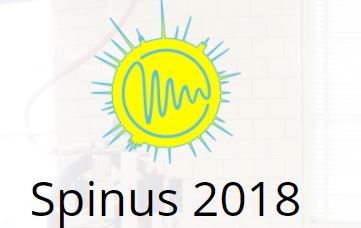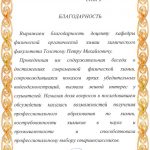 С 1 по 6 апреля прошла очередная 15 школа-конференция Spinus 2018. Приятно отметить, что многие пользователи рц МРМИ и, собственно, сами сотрудники приняли активное участие в этой конференции. Среди сотрудников участвовали: М.А. Вовк, С.И. Сухаржеский, П.М. Толстой, А.С. Мазур. Среди пользователей рц МРМИ: В.И. Чижик, И.С. Гиба, А.В. Иевлев, М. Костин, Д.А. Лузик, Д.А. Маркелов, В.В. Малоярова, А.В. Пенькова, С.О. Рабдано, В. Барнаускайте.
С 1 по 6 апреля прошла очередная 15 школа-конференция Spinus 2018. Приятно отметить, что многие пользователи рц МРМИ и, собственно, сами сотрудники приняли активное участие в этой конференции. Среди сотрудников участвовали: М.А. Вовк, С.И. Сухаржеский, П.М. Толстой, А.С. Мазур. Среди пользователей рц МРМИ: В.И. Чижик, И.С. Гиба, А.В. Иевлев, М. Костин, Д.А. Лузик, Д.А. Маркелов, В.В. Малоярова, А.В. Пенькова, С.О. Рабдано, В. Барнаускайте.
Мы надеемся, что в будущем интерес к конференции Spinus среди пользователей рц МРМИ будет возрастать, и молодые исследователи будут активно апробировать свои работы и представлять их широкому кругу коллег.







